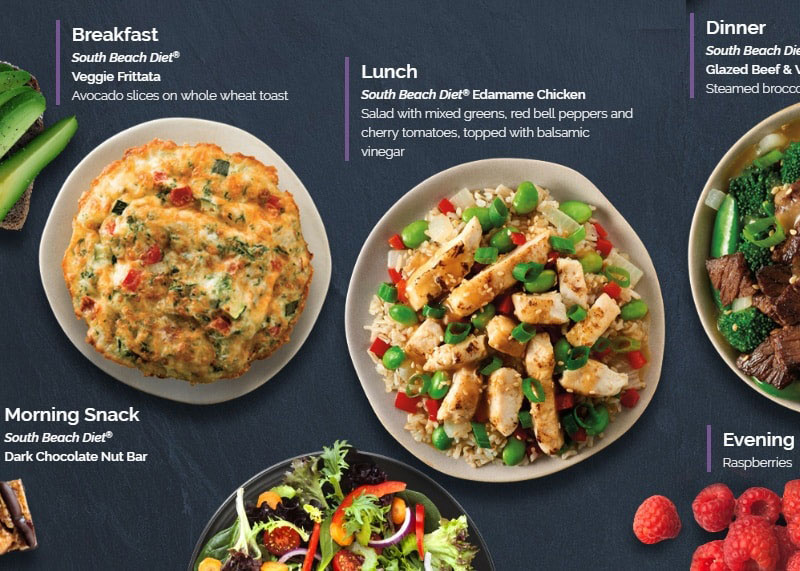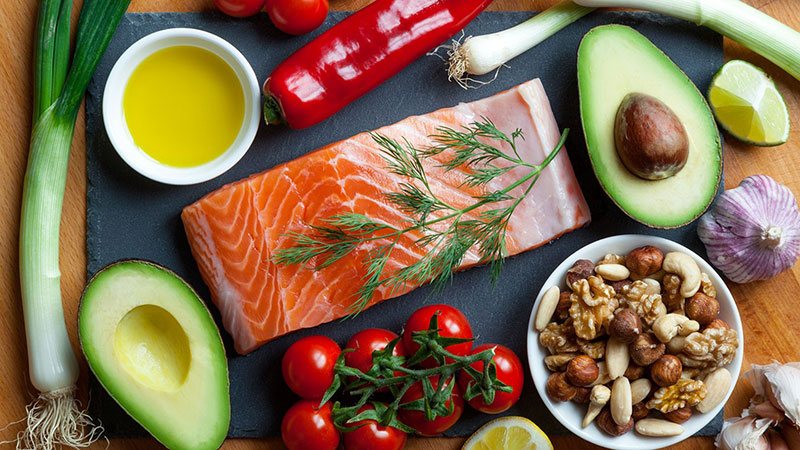The South Beach Diet
The South Beach Diet is a low-carb diet reputed to improve heart health and achieve quick weight loss without causing hunger. It was created in the 1990s by cardiologist Dr. Arthur Agatston, as a better version, in his opinion, of the Atkins diet. He believed that the Atkins plan did not cater adequately to the peculiar needs of people with heart disease due to the amount of saturated fat it allowed. He also felt that it restricted high-fiber foods rich in, what he called, “good carbs.” The plan that developed was low-glycemic index carbs, and designed to help overweight and diabetic individuals lose weight, while lowering their risk of heart disease. After putting himself on his own diet and successfully losing weight, Dr. Agatston began to prescribe what became known as ‘The South Beach diet’ to his patients.
The South Beach Diet is a lower-carb diet which emphasizes lean meats, unsaturated fats and low-glycemic-index carbs. Glycemic Index Foundation’s website defines the Glycemic Index (GI) as “a relative ranking of carbohydrate in foods according to how they affect blood glucose levels. Carbohydrates with a low GI value (55 or less) are more slowly digested, absorbed and metabolized and cause a lower and slower rise in blood glucose and, therefore usually, insulin levels.” The goal of consuming more of the low-glycemic index carbs is to keep blood sugar levels and insulin within the desirable range.
This diet is broken into three phases; two weight-loss phases and one weight-maintenance phase. As progress is made through the phases, the proportion of carbohydrates consumed is gradually increased, while simultaneously decreasing the proportion of fat and protein
Phase 1: One to Fourteen days
This has the most restriction of all the phases and intake of high-carb food, such as fruits and grains is severely limited to force a drop in blood-sugar and insulin levels. The phase is also designed to help the individual manage their cravings.
Meals during this first phase of two weeks will usually consist of small amounts of healthy fat, with lots of lean protein, legumes and non-starchy vegetable.
Two mandatory snacks of lean protein and vegetables are allowed per day.
The target weight-loss for this phase is 8–13 pounds (3.5–6 kg)
Phase 2: Day Fifteen to Achievement of Target Weight
All foods permitted in Phase 1 are also allowed in Phase 2, with the addition of sources of “good carbs,” such as, whole grains, limited portions of fruit and specific kinds of alcohol.
The target weight-loss during this period is around 1 to 2 pounds or 0.5–1 kg per week.
Phase 3: Once target weight is achieved
This phase is known as the maintenance period where the individual has reached their targeted weight and now retains the phase two diet as a lifestyle with occasional indulgence in treats.
There are no real restrictions in this phase; no foods are fully off-limits, if they begin to put on weight, individuals are advised to return to the phase one diet plan and work their way all over to phase three.
Pros and Cons of the South Beach Diet
Pros
- Its ability to produce weight loss without hunger is a plus. This is because, like other low-carbs diet, the South Beach Diet modifies hormone levels to produce feelings of satiety.
- It is possible to eat out and have dinner with friends on the South Beach Diet, including during phase one
- The diet encourages high intake of fatty fish like salmon, leafy greens and cruciferous veggies. These have been shown to fight inflammation
- It is also a sustainable way of eating. This means that people on the diet are more likely to stay on it, which favors their ability to not only lose weight, but also keep it off, in the long run.
- There is no calorie-counting with the South Beach diet. This diet, instead encourages regular meals and snacks
Cons
- Its exclusion of coconut oil denies people on the plan a vital food with several proven health benefits; weight loss, belly fat reduction and better heart health in high risk individuals.
- On the other hand, it permits processed vegetable oils, which pose significant health risks, given especially that the diet is targeted individuals with heart disease or a family history of it.
- The South Beach diet may be low in dietary fiber, like other low-carb diets
Who this eating plan is for?
Individuals who are overweight and suffer from heart disease or diabetes
People who want a diet that will help them lose weight without being too restrictive
Foods Allowed and Disallowed On The South Beach diet
This diet incorporates a lot of flexibility in what foods are allowed or disallowed. What is disallowed in the first phase of a South Beach Diet may be permitted in other phases.
Below is a sampling of allowed and disallowed in phase one
Allowed
- Lean Protein
- Non-Starchy Vegetable
- Legumes
- Nuts and Seeds
- Monosaturated Oils and Fats
- Avocado
- Mayonnaise
- Sugar-free sweet treats
- Broths
- Milk and sour cream
- Coffee and tea.
Disallowed
- Fatty meat and poultry
- Coconut oil
- Butter
- Refined sugar
- Honey
- Grains
- Maple syrup
- All fruits and fruit juices
- Agave nectar
- Yams
- Corn
- White potatoes
- Carrots, beets and turnips
Medical Benefits of the South Beach Diet
The South Beach diet has been shown to have the following medical benefits
- Inducing weight loss within a significantly short period of time
- Reducing risk-factors for heart disease
- Reduce blood-sugar and insulin levels
- Reducing hunger in individuals and helping them to keep off the weight they lost
Are there any medical studies on the South Beach plan
In one study of obese people with metabolic syndrome who followed the South Beach Diet for a twelve weeks period, participants had each lost an average 11 pounds or 5.2 kg of weight and achieved a 2 inches or 5.1 cm reduction in waist circumference from around their waists. There were also decreases in fasting insulin and increase in CCK, the fullness hormone.
Studies recognize the benefits of low-carbs diet for weight-loss versus low-fat diets. However, there is a dearth of conclusive studies on the South Beach Diet specifically. Perhaps due to it having only been a decade since it started to gain popularity.





